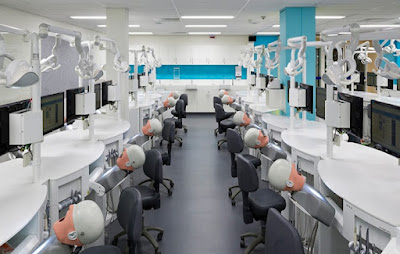
The Definitive Guide To Consulting Room Design

In any clinic, the Convert House To Medical Clinic is probably the most important area. Because that is where the doctor and the patient talk about the patient’s health conditions and duration of treatment, clinical specialists may be forced to deliver bad news or have difficult conversations with their patients, which may upset or anger them. As a result, it’s critical that the consultation room be designed with the patient’s context in mind. An inviting and encompassing climate will reduce anxiety and encourage patients to return to your business, whereas efficiency-driven designs will have the opposite effect.
If you don’t want to spend much money on a clinic, convert the house to the medical clinic, which will reduce your cost rather than buying a new one. The very first suggestion is to access up and make your room more inviting. Shade, light levels, and room layout can all contribute to stress levels increasing or falling. While consulting rooms typically only require a small amount of floor space to accommodate a single patient and doctor, patients may feel uneasy if the room is too small. Dark colours and little natural light will further shrink the space and make it feel claustrophobic.
Why Is It Important To Consider Positive Patient Outcomes When Designing A Doctor’s Consultation Room?
In the end, healthcare clinics are no different from any other retail establishment. Customers have many options in the market and will stick with a medical provider that fits their budget, provides the necessary primary care services, and provides a positive customer experience. Patients are increasingly relying on online customer reviews rather than businesses they have visited in the past when choosing a health practitioner, according to a Brookings Institution study. As a result, qualified professional clinics must design their facilities with the goal of increasing positive patient outcomes.
The way patients feel during consultations is one of the most important factors. When discussing medical issues with a specialist, patients want to feel as comfortable and relaxed as possible, so the patient-centric design must meet these expectations. Privacy is also an important consideration in the design of specialist practice.
Eventually, patients and family members want to be more involved in their therapies than ever before. Working in conjunction with patients in their very own care, as we heard Healthcare, is the contemporary holy grail for medical treatment. When setting up a consulting room, design elements that meet this demand are essential.
A Suggestion For Making Your Consultation Comfortable Place More Patient-Centered
While it’s essential to keep your clinic’s footprint small to save money, make sure your professional services spaces are large enough to accommodate more than two people (in case patients need help from friends or family). When designing your consultation rooms, use a lighter colour palette and large windows to allow plenty of natural light in.
Another thing to consider is how to achieve maximum patient confidentiality once you’ve created a more welcoming environment in your Consulting Room Fitouts. In today’s healthcare layout, open-plan clinics and divide-and-conquer multi-function rooms are all the rage. Your consulting rooms, on the other hand, should deviate from this trend in order to increase patient privacy.
